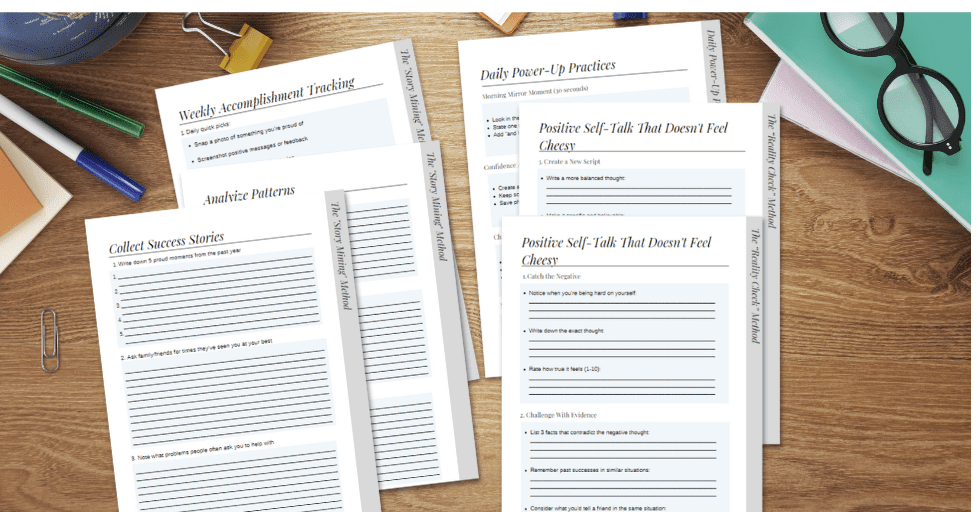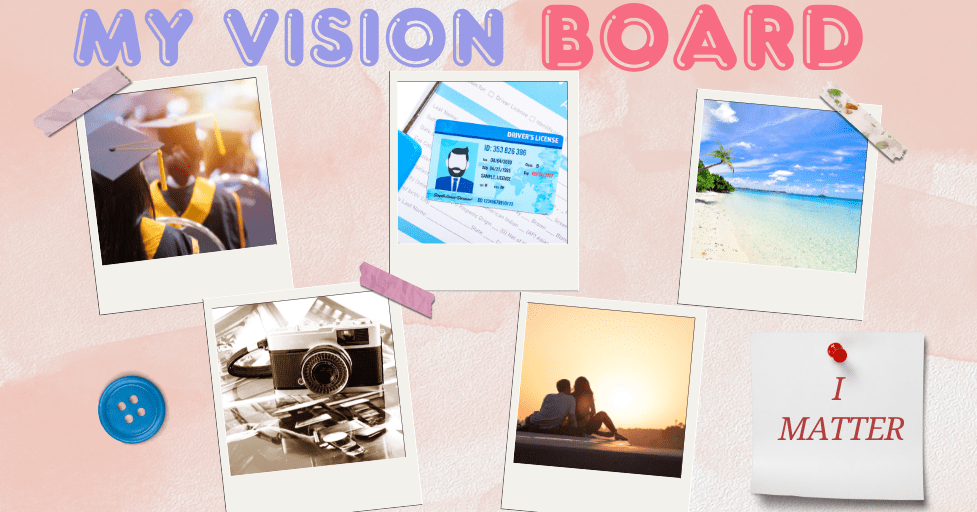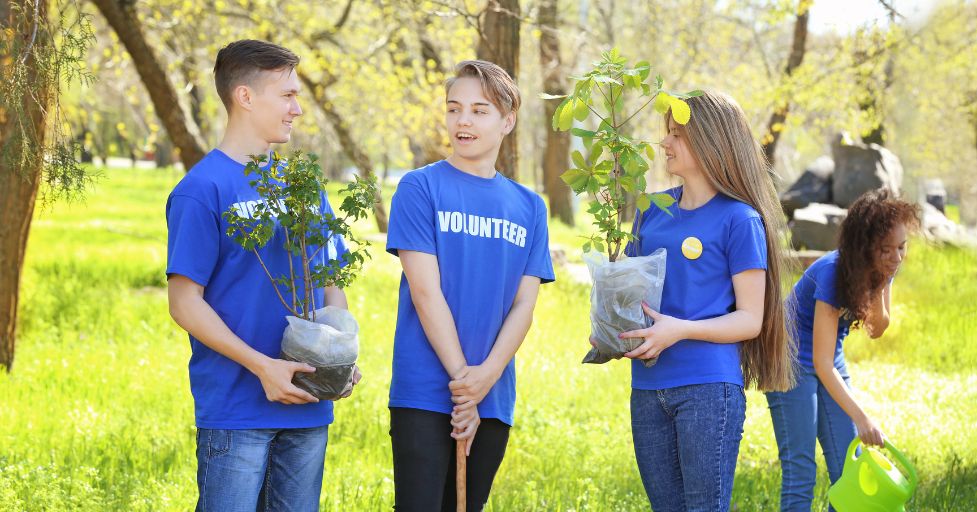Activities for Teenagers on Self-Esteem: A Comprehensive Guide to Empowering Confidence Plus Worksheets (2025)
Disclosure: This post may contain affiliate links, meaning I may get a small commission if you decide to make a purchase through my links, at no cost to you.

Activities for Teenagers on Self-Esteem Worksheets
Are you looking for Self Esteem Activities for teenagers? Did you know that according to recent studies, nearly 55% of teenagers struggle with low self-esteem during their high school years?
As someone who’s worked with teens for over a decade, I’ve seen firsthand how the right activities can transform a teenager’s self-perception.
Let’s dive into some exercises that have helped countless teens boost their confidence and discover their inner strength. These aren’t your typical “just believe in yourself” suggestions. We’re talking real, practical activities that teens actually enjoy!
Let me tell you something that might surprise you – I used to be that quiet kid in the back of the classroom, practically trying to become invisible!
After years of working with teenagers and young adults as a job coach, mom, and positive discipline educator, I’ve discovered some amazing self-esteem activities for teens that truly transform how teens see themselves.
These aren’t your typical “write down three things you like about yourself” exercises (though those have their place too!). These teenage self esteem activities will bust through negative core beliefs, help teens gain emotional intelligence, and improve their mental health.
Related:
50 Powerful Mindfulness Quotes for Kids and Teens
Best Conflict Resolution Games for Teens
Creative Building Self Esteem Activities: Finding Your Voice

Journal Prompting for Self-Discovery
You know what’s funny? When I first suggested journaling to teens, I got more eyerolls than a bad dad joke! But here’s the secret sauce – it’s all in the questions you ask.
Checkout the article —-> Benefits of Journaling for Kids of All Ages
This is one of my favorite confidence building activities, because it really works. As much as I love a good gratitude journal for a growth mindset, I really love these prompts that combat negative beliefs.
Instead of generic prompts, I’ve found these specific questions work wonders:
- “What would you do tomorrow if you knew you couldn’t fail?”
- “Describe a time when you were proud of how you handled a tough situation”
- “If your best friend was describing your best qualities, what would they say?”
Pro tip: Get them started with a 5-minute timer. It’s less overwhelming, and I’ve noticed teens usually want to keep writing once they get going!
And hey, decorating that journal? Totally part of the process. I’ve seen some amazing personalized covers that really reflect each teen’s personality.
Related:
Emotional Intelligence Journaling
Creating Vision Boards That Actually Work

Here’s something I learned the hard way – traditional vision boards can sometimes feel a bit… well, cheesy. That’s why I love mixing it up with digital options.
Have you tried Canva or Pinterest for this? The teens and young adults I work with absolutely love it!
Quick steps that have worked great in my groups:
- Start with a “brain dump” of goals and dreams (no judging!) SMART Goals are for another time
- Find images that represent these goals (Instagram-worthy pics are totally fine).
- Organize them into categories: personal growth, education, relationships, etc.
Digital hack: Create an Instagram-style vision board using photo editing apps. It feels more natural to teens, and they can update it anytime. One of my students actually turned hers into her phone’s wallpaper – genius, right?
Related:
Solutions for Teen Academic Struggles
Building Your Power Playlist

Music – now this is where things get really interesting! I remember one particularly quiet student who completely transformed after we did this activity. Here’s the approach that works great:
- Choose 3 songs that make you feel unstoppable
- Add 2 songs that remind you of times you overcame challenges
- Include 1 song that represents who you want to become
The key? Let them pick ANY genre. You might not get their choices (trust me, I’ve heard some interesting ones!), but what matters is how the music makes them feel.
It doesn’t really matter what songs sing to your personal values, it’s what resonates with theirs.
Physical Confidence Builders: Moving Beyond Mirror Images

Teen-Friendly Workout Routines
Let’s get real – traditional workouts can be intimidating. That’s why I always start with what I call “stealth strength” activities.
These get teens active and moving without the “my knee hurts” excuses. These are exercises that feel more like fun than work:
- 10-minute dance breaks between study sessions
- Partner exercises that focus on teamwork
- Strength challenges that track personal progress, not competition
The game-changer? Teaching teens to focus on how they feel, not how they look. When one of my students realized she could do ten push-ups after starting with just one, her confidence soared through the roof!
Dance it Out: Body Positivity in Motion
Would you believe that some of our most successful sessions started with everyone feeling totally awkward? That’s actually perfect! Here’s what works:
- Start with simple movement games
- Progress to follow-along videos (We love Just Dance video on Youtube – they are perfect!)
- Eventually, let teens create their own choreography
The magic happens in this self love activity when they stop thinking about how they look and start focusing on how much fun they’re having. I’ve seen incredible transformations just from these dance sessions.
Team Sports with a Twist
Here’s something most people get wrong about sports and self-esteem – it’s not about winning! The real confidence boost comes from:
- Learning new skills in a supportive environment
- Contributing to team success in unique ways
- Celebrating personal improvements, no matter how small
I remember one teen who thought she was “terrible at sports.” Turns out, she was an amazing team strategist in volleyball. Finding her niche completely changed her self-perception.
Related:
Positive Affirmations for Teens
Social Skills Enhancement: Building Self Esteem in Adolescence Through Connection

Power of Peer Circles
These discussion groups are pure gold when done right. Here’s what I’ve found works best:
- Start with light topics (favorite movies, dream vacations)
- Gradually move to more personal discussions
- Always end with a positive sharing round
The key? Creating what I call a “judgment-free zone.” It’s amazing how teens open up when they feel truly safe to share.
Role-Playing Real Life
Ok, hear me out – role-playing might sound cheesy, but it’s incredibly effective when done right. We focus on real situations teens face:
- Standing up to peer pressure
- Handling disagreements with friends
- Asking for help when needed
The secret is making it relevant and slightly challenging, but not overwhelming. One teen told me these practice sessions helped her ace a college interview!
Teenage Confidence Building Activities – Making a Difference Through Service

This is possibly my favorite confidence-building tool. Why? Because it shifts focus from self-doubt to making an impact. Some winning projects we’ve done:
- Organizing food drives
- Spending time singing and dancing with seniors at nursing homes
- Creating “Thank You” packages for corporate donations
The transformation I see in teens when they realize they can make a real difference? Absolutely priceless.
Adolescence Self Esteem – Leadership Opportunities That Actually Work
Here’s what I’ve learned – everyone can be a leader in their own way. The trick is finding the right fit:
- Tech-savvy teens can lead digital projects
- Creative types can organize art initiatives
- Social butterflies excel at event planning
One of my quietest students ended up leading our entire yearbook design. She just needed the right opportunity to shine.
Peer Mentoring Magic – Building Self Esteem in Teens
This is the ultimate confidence booster because it works both ways. The mentor gains confidence from helping others, while the mentee learns from someone who “gets it.” Here’s how we structure it:
- Match peers based on interests, not just age
- Set clear but flexible goals
- Regular check-ins to celebrate progress
I’ve seen incredible friendships form through these programs, and the confidence boost is just amazing.
Remember, building self-esteem isn’t about dramatic overnight changes. It’s about creating consistent, positive experiences that help teens discover their own awesome potential.
Start small, celebrate progress, and watch the transformation unfold. What’s been your experience with any of these activities? I’d love to hear what’s worked for the teens in your life!
Digital Age and Family-Based Activities for Teen Self-Esteem: A Practical Guide

Digital Age Self-Esteem Builders: Navigating the Online World
After spending years helping teens navigate the digital landscape, I’ve learned something crucial – it’s not about avoiding social media entirely, it’s about using it intentionally!
Let me share some strategies that have genuinely worked with the teens I’ve counseled.
Related:
Social Media Detox Challenges That Actually Work
Listen, I get it. Telling teens to “just stay off their phones” is about as effective as telling a fish to avoid water! Instead, here’s what I’ve found really works:
Start with the “sunset challenge” – no social media after sunset. One of my students came up with this idea, and it’s brilliant!
She reported sleeping better within just a few days. Here’s a simple framework that’s proven successful:
- Begin with a 24-hour mini-detox on a weekend
- Create a “phone-free zone” in their favorite relaxation spot
- Replace scrolling time with a specific activity they enjoy
Pro tip: Make it fun by turning it into a group challenge! I’ve seen teens get super creative with this, posting their “offline adventures” when they return.
One group even started a “Real Life vs. Instagram” photo series that was absolutely eye-opening!
Related:
100 Quotes About Parenting Teens
10 Best Teen Stress Relief Products
Building a Positive Digital Footprint
Here’s something most people don’t talk about – your digital footprint can actually be a confidence booster!
I remember working with a teen who transformed her Instagram from a source of anxiety to a portfolio of her photography passion. Here’s how:
- Create a personal website or blog showcasing achievements
- Start a LinkedIn profile highlighting volunteer work and skills
- Curate social media to reflect genuine interests and talents
The game-changer? Teaching teens to ask themselves, “Would I want my future dream employer to see this?” before posting. It’s amazing how this simple question shifts perspective!
Cyber-Kindness Projects That Make a Difference
You wouldn’t believe the impact of organized kindness online! These projects have literally changed school cultures:
- “Compliment Chains” – Each person posts something nice about two others
- “Gratitude Tags” – Sharing appreciation for those who’ve helped them
- “Support Squads” – Groups dedicated to lifting each other up online
One of my favorite success stories? A group of teens started a “Good News Only” Instagram account for their school. It became so popular that even teachers started following it!
Creating Uplifting Content with Impact
This is where things get really exciting! I’ve seen teens absolutely shine when creating content that helps others. Here’s what works:
- Start a podcast sharing personal growth stories
- Create short motivational videos
- Design inspiring graphics with positive messages
The secret sauce? Making it authentic. One shy student started sharing study tips on TikTok, and guess what? She not only built confidence but also helped hundreds of other students!
Related:
Top 5 SMART Online Safety Tips
Solutions for Teen Academic Struggles
10 Powerful Way For Managing Teen Defiance
Family-Based Confidence Activities: Building Stronger Bonds

Parent-Teen Appreciation Exercises That Don’t Feel Forced
Ok, let’s be honest – getting teens and parents to open up can sometimes feel like pulling teeth! But I’ve discovered some approaches that actually work:
- The “Daily High-Five” – Each person shares one thing they admire about the other
- “Appreciation Jar” – Family members drop notes of gratitude throughout the week
- “Remember When” sessions – Sharing favorite family memories
One family I worked with turned this into a dinner table tradition, and the transformation in their relationship was incredible! The key? Keep it short, specific, and sincere.
Collaborative Problem-Solving That Strengthens Bonds
Here’s what I’ve learned – teens feel valued when their input matters. Try these projects:
- Planning a family vacation together
- Redesigning a space in the house
- Creating a family bucket list
I love the story of one family who let their teen lead a complete kitchen reorganization. Yes, it took longer than if the parents had done it alone, but the pride on that kid’s face? Priceless!
Trust-Building Activities That Really Work
This is perhaps the most crucial element of all. Trust builds confidence, and here’s how we develop it:
- “Responsibility Stepping Stones” – Gradually increasing independence
- “Open Door Discussions” – Regular check-ins without judgment
- “Family Council Meetings” – Where everyone’s voice carries equal weight
The magic happens when parents learn to listen more than they speak. One mom told me she learned more about her daughter during their weekly “coffee dates” than she had in years of trying to force conversations.
Here’s my favorite trust-building exercise: The “Three Things” practice. Each person shares:
- Something they’re proud of
- Something they’re working on
- Something they need help with
It’s simple but powerful because it creates a safe space for both achievements and struggles.
Remember, building self-esteem in the digital age is a family journey. It requires patience, consistency, and lots of trial and error.
Don’t expect perfection – aim for progress. Sometimes the smallest changes lead to the biggest breakthroughs.
And hey, if something doesn’t work right away, that’s totally normal! Every teen is different, and finding the right combination of activities is part of the journey.
The key is to keep the lines of communication open and maintain a supportive, non-judgmental environment.
What matters most is creating a space where teens feel seen, heard, and valued – both online and off. When we achieve that, the confidence naturally follows.
Have you tried any of these activities with your teen? I’d love to hear about your experiences and what’s worked best for your family!
Related:
Powerful Alternative to Yelling
Regain Balance with Out of Control Teenagers
Personal Development Exercises: Building Lasting Teen Confidence

You know what amazes me after years of working with teens? It’s how often they underestimate their own potential! I remember one student who was convinced she “wasn’t good at anything.”
Fast forward six months of structured personal development work, and she was teaching the software we use to create the yearbook to fellow students! Let me share the exact strategies that have helped hundreds of teens discover their inner awesome.
Goal-Setting Workshops That Actually Get Results
Let’s be real – most teen goal-setting exercises fail because they’re too vague or overwhelming. Here’s the system I’ve developed that actually works:
The “SUCCESS” Method for Teen Goals
- Start Small (seriously small!)
- Daily goals that take 5-15 minutes
- Weekly goals that build on daily wins
- Monthly goals that feel slightly challenging but doable
- Use Visual Tracking
- Create a “goal map” with stepping stones
- Use fun stickers or digital badges
- Take progress photos/screenshots
One of my students used this method to learn guitar. His first goal? “Practice for 5 minutes before dinner.” That’s it! By month three, he was playing full songs. The secret? Those tiny daily wins add up fast!
Pro tip: I always tell teens to pick a goal that they can tell someone about with excitement, not dread. If sharing the goal makes them light up, we’re on the right track!
Skill-Building Activities That Spark Passion
Here’s something I’ve noticed – confidence skyrockets when teens master new skills they actually care about.
These self confidence activities for teens will not only help them discover their strengths, but maybe even give them something to pursue throughout their lives. Let me share our “Interest-to-Mastery” framework:
- Exploration Phase (2 weeks):
- Try 3 different activities in an area of interest
- Keep a quick notes journal about each experience
- Rate enjoyment level out of 10
- Focus Phase (1 month):
- Pick the most engaging activity
- Set specific learning milestones
- Find a mentor or online community
- Mastery Phase (ongoing):
- Create a project showcasing the skill
- Teach others basic elements
- Join or create a club around the interest
I had a student who used this framework to explore photography. She started with phone photos, moved to basic editing, and now runs her school’s yearbook committee! The key? We never pushed – we just provided structure to her natural interests.
Personal Strengths Assessment: Self Esteem For Teenagers Worksheets

Forget those generic online quizzes! Check out our self esteem for teenagers worksheets. Here’s how we help teens uncover their real strengths:
Download the Story Minding, Reality Check, and Power Up worksheets here.
The “Story Mining” Method
- Collect Success Stories:
- Write down 5 proud moments from the past year
- Ask family/friends for times they’ve seen you at your best
- Note what problems people often ask you to help with
2. Analyze Patterns
- Look for recurring themes in these stories
- Identify what energizes vs. drains you
- Spot unique approaches you bring to challenges
One teen discovered she had amazing conflict resolution skills just by noticing how often friends came to her for advice about drama! Now she’s training to be a peer mediator.
Weekly Accomplishment Tracking That Feels Natural
Here’s the thing about tracking accomplishments – if it feels like homework, teens won’t do it. Instead, try what I call the “Highlights Reel” approach:
- Daily Quick-Pics:
- Snap a photo of something you’re proud of
- Screenshot positive messages or feedback
- Record quick voice notes about wins
2. Weekly Reflection (Sunday Spotlight):
- Review the week’s highlights
- Pick top 3 moments to celebrate
- Plan one exciting thing for next week
The game-changer? Making it social! One group started a private Instagram account just for sharing their wins. The support they give each other is incredible!
Positive Self-Talk That Doesn’t Feel Cheesy

Let’s tackle the elephant in the room – most positive self-talk exercises make teens cringe! Here’s what actually works:
The “Reality Check” Method
- Catch the Negative:
- Notice when you’re being hard on yourself
- Write down the exact thought
- Rate how true it feels (1-10)
2. Challenge with Evidence:
- List 3 facts that contradict the negative thought
- Remember past successes in similar situations
- Consider what you’d tell a friend in the same situation
3. Create a New Script:
- Write a more balanced thought
- Make it specific and believable
- Practice saying it out loud when alone
One of my students turned this into a song-writing exercise – she’d write lyrics challenging her negative thoughts. How cool is that?
Daily Power-Up Practices
These are quick exercises that teens can do anywhere:
- Morning Mirror Moment (30 seconds):
- Look in the mirror
- State one specific thing you’re good at
- Add “and I’m getting better every day”
2. Confidence Anchors:
- Create a playlist of songs that make you feel strong
- Keep screenshots of positive messages
- Save photos of proud moments
3. Challenge Champions:
- Pick one negative thought to challenge each day
- Share the challenge with a trusted friend
- Celebrate when you catch and correct negative self-talk
I had a student who struggled with test anxiety. She started using power-up practices before exams, and her grades improved – not because she studied more, but because she believed in herself more!
Remember, personal development isn’t about becoming a different person – it’s about becoming more of who you already are.
The key is making these practices feel natural and personal. Start small, celebrate progress, and watch the confidence grow!
One final tip? Document the journey! Take pictures, save screenshots, write quick notes. Looking back at how far you’ve come is incredibly powerful.
I still have students send me updates years later, sharing how these simple practices changed their lives.
What aspect of personal development seems most challenging for the teen in your life? Let’s brainstorm some personalized strategies that might help!
Conclusion: Activities for Teenagers on Self-Esteem
Remember, building self-esteem is a journey, not a destination. These activities provide a solid foundation for teenagers to develop lasting confidence and self-worth.
Start with one activity that resonates most with your teen and gradually introduce others. The key is consistency and creating a supportive environment where your teenager feels safe to explore and grow.
GET FREE ACCESS TO OUR LIBRARY OF FREE PRINTABLES AND RESOURCES!
Enter Your Name and Email for FREE Access to our Library of FREE Home and Family Printables Series!





